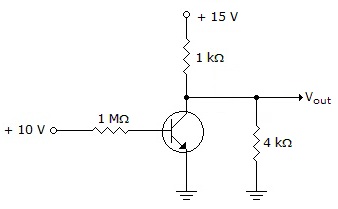Discussion
Home ‣ Digital Electronics ‣ Signals and Switches See What Others Are Saying!
- Question
Why is the given circuit called an inverter?

Options- A. The output is the opposite (inverse) of the input.
- B. The output is in phase with the input.
- C. The output is the same as the input.
- D. There is no output.
- Correct Answer
- The output is the opposite (inverse) of the input.
- 1. The decimal number system consists of the digits 0?10.
Options- A. True
- B. False Discuss
- 2. A crystal demonstrates the ________ effect when a mechanical force across the crystal causes a small voltage to be generated.
Options- A. photoelectric
- B. Co-pitts
- C. piezoelectric
- D. flywheel Discuss
- 3. The Ex-NOR is sometimes called the ________.
Options- A. parity gate
- B. equality gate
- C. inverted OR
- D. parity gate or the equality gate Discuss
- 4. Linearity error is the maximum deviation in step size from the ideal step size.
Options- A. True
- B. False Discuss
- 5. In odd parity, 100011010 would pass the parity check.
Options- A. True
- B. False Discuss
- 6. ASCII stands for American Standard Code for Information Interchange.
Options- A. True
- B. False Discuss
- 7. A seven-segment, common-anode LED display is designed for:
Options- A. all cathodes to be wired together
- B. one common LED
- C. a HIGH to turn off each segment
- D. disorientation of segment modules Discuss
- 8. Ten TTL loads per TTL driver is known as:
Options- A. noise immunity
- B. fan-out
- C. power dissipation
- D. propagation delay Discuss
- 9. The GAL chip uses an EEPROM array that is erasable and reprogrammable at least 1000 times.
Options- A. True
- B. False Discuss
- 10. The major structures of the MAX7000S are the logic array block (LAB) and the programmable intermediate array (PIA).
Options- A. True
- B. False Discuss
More questions
Correct Answer: False
Correct Answer: piezoelectric
Correct Answer: equality gate
Correct Answer: True
Correct Answer: False
Correct Answer: True
Correct Answer: a HIGH to turn off each segment
Correct Answer: fan-out
Correct Answer: False
Correct Answer: False
Comments
There are no comments.More in Digital Electronics:
Programming
Copyright ©CuriousTab. All rights reserved.
